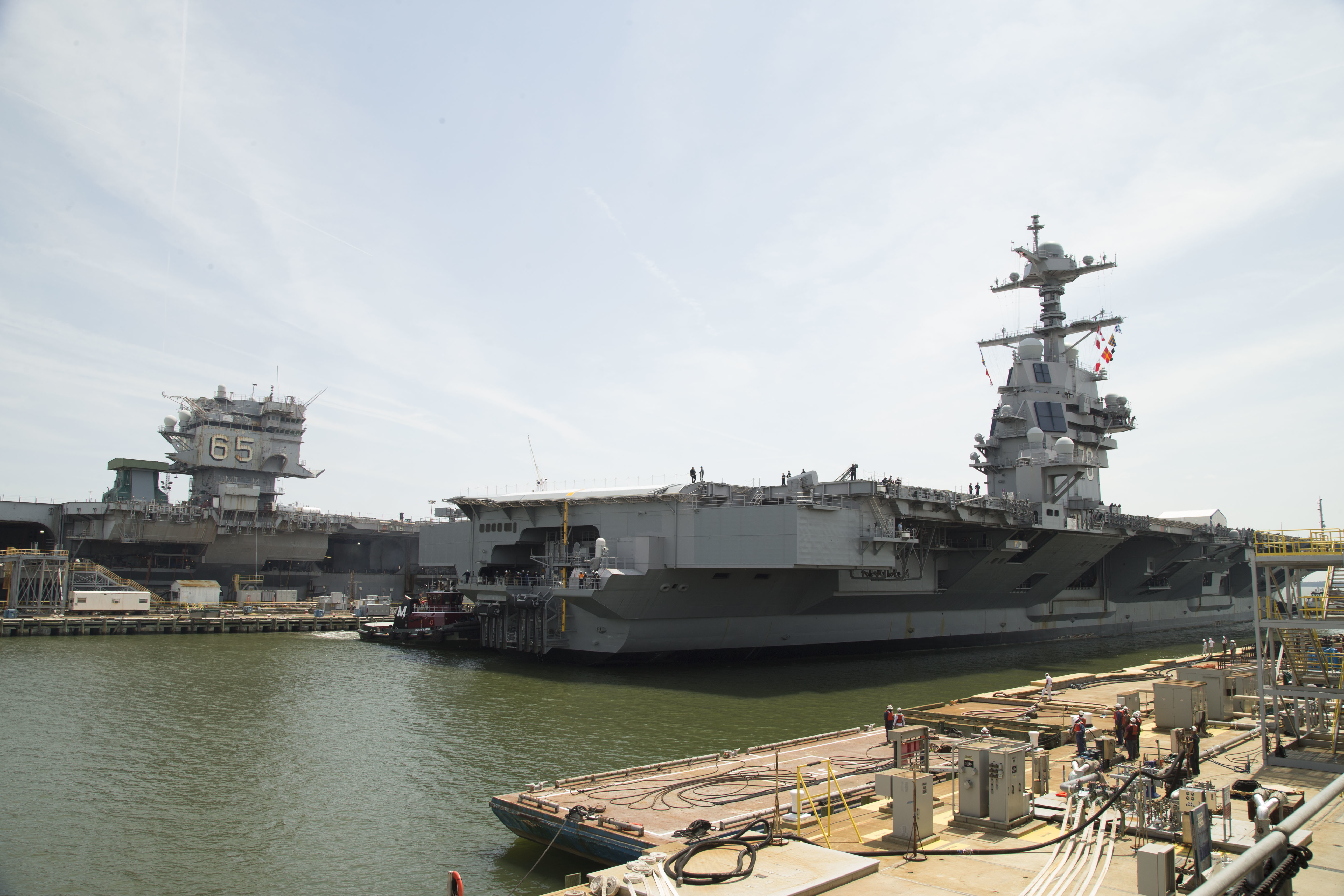
The Navy’s ability to maintain and manufacture aircraft carrier and submarine propulsion systems is at risk, a panel of experts say, because the commercial nuclear industry has been in failing health for two decades.
Today, the Navy operates more nuclear reactors than the entire U.S. commercial reactor industry. The Navy’s 101 reactor-powered carriers and submarines provide an unmatched advantage to operate around the world continuously. Building these reactors, though, relies on a shrinking pool of vendors, Adm. James Caldwell, the director of Naval Nuclear Propulsion Program, said at the Nuclear Energy, Naval Propulsion, and National Security Symposium at the Center for Strategic and International Studies.
“The base is small. The base is healthy and capable of supporting our Navy propulsion needs. It’s sustainable through the program of record, but it takes a lot of energy to sustain that,” Caldwell said.
For example, the Navy only has one contractor making reactor plant heavy-components and only a handful of companies make the flow control, valves, pumps and other parts, Caldwell said. Several companies make reactor instrument controls.
The vendors the nuclear Navy relies on are being hurt by a retracting commercial nuclear power plant industry. Cheaper fuel alternatives, such as natural gas, are making it too expensive for power companies to run their nuclear plants, said Mike Wallace, a senior advisor at CSIS and former Chairman of the Constellation Energy Nuclear Group. Wallace also is a former Navy nuclear submarine officer.
As a result, today the U.S. has 98 commercial reactors, and Wallace expects this number will continue decreasing. With fewer commercial reactors operating, there is not enough business for the nuclear industry’s vendors.
“We are continuing if not accelerating in a decline, impacting not only domestic nuclear energy but also the infrastructure to support naval propulsion and the infrastructure supporting our weapons complex,” Wallace said.
A solid 30-year shipbuilding plan and stable budget environment would signal to the nuclear industry they could earn a return on investing in new equipment or expanding their business operations, Caldwell said.
“What helps the commercial industry helps the Navy nuclear propulsion industry,” Caldwell said. “More vendors mean more affordability; also means the ability to have some innovation that might help us out.”
In 16 years – between 1946, when then Capt. Hyman Rickover was in charge of developing nuclear propulsion for the Navy, and 1962, when USS Enterprise (CVN-65) began its maiden deployment – the Navy went from considering a theoretical propulsion unit to operating the an eight-reactor ship larger than anything the world had ever seen, Chief of Naval Operations Adm. John Richardson said during a keynote speech at the event.
“The speed this nation can achieve if we put our minds to it is just stunning,” Richardson said.
Wallace was not so sure the commercial nuclear industry would survive. He doesn’t see the federal government doing enough to ensure the health of these companies, which are vital to maintaining a nuclear Navy.
“Under current conditions, in the next 15 to 20 years we could see all commercial plants shut down in the U.S.,” Wallace said. “It’s a trend line down that, at some point, hits a click because you don’t want to be the last one holding a commercial plant.”
Meanwhile, Russia and China are rapidly expanding their state-sponsored nuclear energy industries, which include a robust export market, said William Ostendorff, a retired Navy captain and a visiting professor at the U.S. Naval Academy. Ostendorff is also a former commissioner of the U.S. Nuclear Regulatory Commission.
Russia and China are building dozens of nuclear power plants around the world, in countries such as Turkey and Pakistan, Ostendorff said. The U.S. nuclear power industry is building two plants domestically and zero overseas.
“U.S. companies lack the capital and structure to emulate the Russia and Chinese models,” Ostendorff said.





